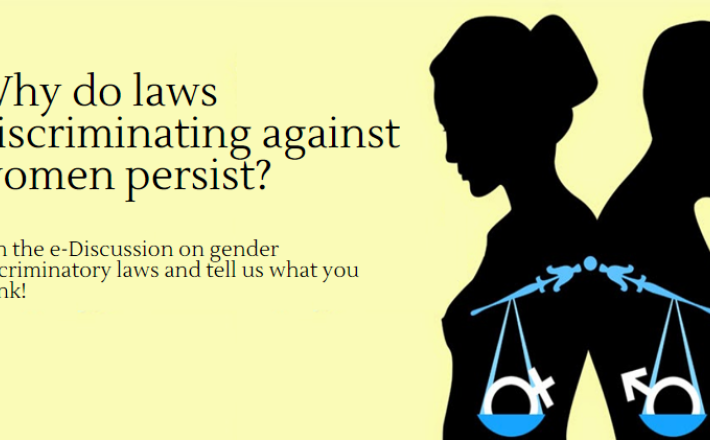Eliminating Discriminatory Laws and Closing Gender Gaps
|
Worldwide, several challenges to the full realization of women's rights persist, and women continue face discrimination in access to education, work, social protection, inheritance, economic assets, productive resources and participation in decision-making and society at large. Gender discrimination is defined as "...any distinction, exclusion or restriction made on the basis of sex which has the effect or purpose of impairing or nullifying the recognition, enjoyment |
or exercise by women, irrespective of their marital status, on a basis of equality of men and women, of human rights and fundamental freedoms in the political, economic, social, cultural, civil or any other field." (The Convention on the Elimination of All Forms of Discrimination against Women (CEDAW), adopted in 1979 by the UN General Assembly). Please click here to read the full concept note of this e-Discussion. Please click here to access the consolidated reply of this e-Discussion.
|
|
The e-Discussion will take place from 16 May to 12 June 2016. QUESTIONS Addressing gaps: enactment vs. enforcement
Measures, mechanisms and institutions
Collective action
Please note that there are different options to send your contributions:
|
|
314

|
Worldwide, several challenges to the full realization of women's rights persist, and women continue face discrimination in access to education, work, social protection, inheritance, economic assets, productive resources and participation in decision-making and society at large. Gender discrimination is defined as "...any distinction, exclusion or restriction made on the basis of sex which has the effect or purpose of impairing or nullifying the recognition, enjoyment |
or exercise by women, irrespective of their marital status, on a basis of equality of men and women, of human rights and fundamental freedoms in the political, economic, social, cultural, civil or any other field." (The Convention on the Elimination of All Forms of Discrimination against Women (CEDAW), adopted in 1979 by the UN General Assembly). Please click here to read the full concept note of this e-Discussion. Please click here to access the consolidated reply of this e-Discussion.
|
|
The e-Discussion will take place from 16 May to 12 June 2016. QUESTIONS Addressing gaps: enactment vs. enforcement
Measures, mechanisms and institutions
Collective action
Please note that there are different options to send your contributions:
|
|
314